Top News
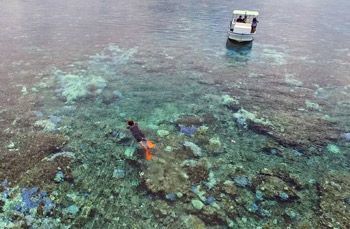
October 1, 2016 Ryukyu Shimpo
On September 11, Ishigaki Island Coastal Leisure Safety Council examined the problem of bleached coral, using a small-sized drone in Yonehara Beach at the north shore of Ishigaki City. The survey revealed that 80 to 90 percent of coral filmed was bleached. Some coral reefs are completely dead. The Council said, “We would like to spread this image and inform the public about the problem.”
At “Sekisei-shoko,” the largest coral lagoon in the country, located between Ishigaki Island and Iriomote Island, coral bleaching caused by sea temperature rise has worsened.
The Council identified a coral reef 500 meters wide at a diving point two kilometers offshore. Most of its coral was bleached, and twenty percent of it had been overgrown by algae. The water temperature was 31 degree Celsius.
A member of the Council Kenji Ohori expressed worry, saying, “Some coral is dead and overgrown by algae. Bleached coral could die at any moment. Most people do not realize the impact of this just hearing about it. By recording and spreading the image, I hope to raise more awareness about the need for conservation among the public, including the public administration.” He plans to disseminate the footage filmed by the drone through the Internet.
(English translation by T&CT and Megumi Chibana)
Go to Japanese
October 4, 2016 Ryukyu Shimpo
Commentary by Ryota Shimabukuro
The Okinawa prefectural government has appealed a ruling made by the Naha branch of the Fukuoka High Court that ruled Okinawa Governor Takeshi Onaga’s cancellation of approval to reclaim land in Henoko, Nago City to be “illegal”. The prefectural government has submitted its grounds for appeal to the Supreme Court.
Okinawa has once again pointed to “omissions” and “deficiencies” in the High Court’s ruling, which acknowledged each of the central government’s claims without undergoing sufficient verification of the facts.
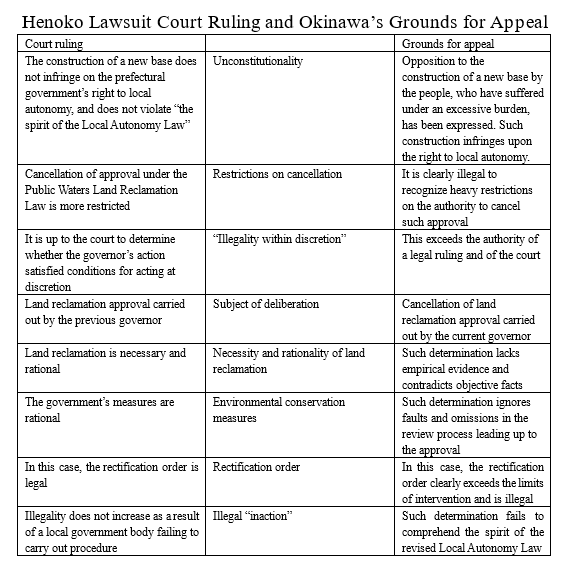
In reviewing the High Court’s ruling, the Supreme Court’s deliberation will only cover the question of whether the ruling involved a violation of the constitution or a serious violation with respect to interpretation of judicial precedents or laws and regulations. In light of this fact, the prefectural government’s grounds for appeal includes mention of the fact that the new base construction conflicts with the Japanese constitution, and also reviews the ruling from various legal perspectives, referencing “violation of the laws of logic,” “violation of empirical laws,” and “premature decision-making” in preparation for the Supreme Court’s deliberation.
The original ruling saw the Fukuoka High Court “take the place of” the prefectural government, which is the administrative body theoretically responsible for determining the justifiability of the land reclamation approval. Upon doing so, the Fukuoka High Court drew the conclusion that the former governor’s approval of the land reclamation “did not involve a breach of discretionary authority”, thus determining the current governor’s cancellation of the approval to be illegal.
The documents submitted by the prefectural government criticize the way in which the litigation was conducted, pointing out that the court did not demonstrate specific “decision-making criteria” used in its deliberation, and that it further refused to hear testimony from expert witnesses despite being requested to do so by the prefectural government; yet it ultimately accepted at face value all of the arguments made by the central government, including those relating to specialized fields.
The conclusion of the ruling drew backlash by going so far as to assert that “in order to remove the harm caused by Futenma Air Station, there is no alternative but to construct the new facilities.” In response to the claims of the court, which ratified the central government’s claim that “Henoko is the only option,” the prefectural government argues that such claims constitute a violation with respect to the Public Waters Reclamation Law, stating, “[the ruling] overstepped the limits of a judicial ruling and the authority of the court.”
The prefectural government also argues that forcefully building, in opposition to the will of the people, a U.S. military facility in which domestic Japanese law will not apply is a violation of the constitution. From the perspectives of the rationality of the Henoko land reclamation plan, its effect on the lives of local residents and on the natural environment, and the extent to which it contributes to the public good, many believe that the High Court ruling lacked sufficient deliberation. Even some members of the central government, which welcomed the ruling in its own favor, have expressed bewilderment at the extent of judicial “overreach,” wondering why the court went so far as to make declarations that were not even necessary. The Supreme Court must now conduct a thorough investigation of the High Court’s ruling.
Go to Japanese
September 29, 2016 Ryukyu Shimpo
Within June of this year, the number of noise complaints made to Higashi Village Office concerning MV-22 Osprey vertical takeoff and landing aircraft and helicopters reached about 60. On September 28, it was publicized that these June complaints outnumbered the 56 complaints made to the Office throughout all of 2015.
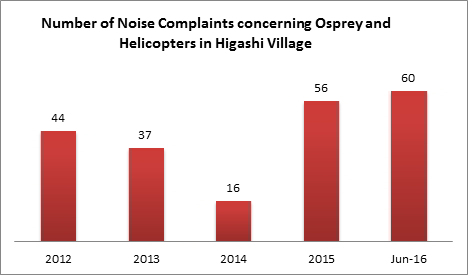
Six helipads are being built around Takae, Higashi Village as part of a plan to return some of the Northern Training Area to Okinawa. Last year in February in the N4 area of the Northern Training Area, which is in the vicinity of Higashi Village, the U.S. military began using helipads for Osprey training. It is very likely that the spike in noise complaints reflects an intensification of noise damage resulting from the use of these helipads.
On September 28, Kiichiro Jahana, head of the Executive Office of the Governor, answered questions from a representative for the Okinawa Prefectural Assembly, Mitsuru Tamaki, regarding these complaints.
Noise complaints about Osprey and helicopters in Higashi Village numbered 44 in 2012, 37 in 2013, 16 in 2014, and 56 in 2015. In June of this year alone, about 60 complains were made in a single month. This is more than throughout any year in the past four years.
(English translation by T&CT and Erin Jones)
Go to Japanese
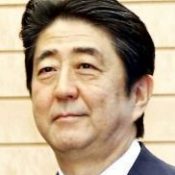
October 4, 2016 Ryukyu Shimpo
The Ministry of Defense made public at the House of Representatives Budget Committee meeting on October 3 that a 162.93-hectare portion of the Northern Training Area (in Higashi and Kunigami Villages), including the additionally provided Ukagawa area, will be developed in connection to the plan for helipad construction. This development will include clearing terrain, building roads to the helipads, and building highways to help with construction work.
During Prime Minister Shinzo Abe’s general policy speech on September 26, he mentioned that the return of 4,000 hectares of land constituting a portion of the Northern Training Area will entail relocating helipads comprising 0.96 hectares of land within the existing training area. He probably got 0.96 hectares by calculating the area of six circular helipads with 45-meter diameters, but the actual area that will be developed is 169 times that amount.
The response from House of Representatives member Seiken Akamine of the Communist Party was to request clarification on the basis for estimating that the helipads will comprise 0.96 hectares, and on the actual area of land that will need to be developed for the entire project.
Abe responded that the current number of seven helipads will be reduced to six, the minimum number the U.S. military requires for its operations. He went on to say that the U.S. had requested helipads 75 meters across, but the Japanese government pushed for and got an agreement for a reduction to 45 meters.
Additionally, Abe said that construction of the helipads must take place. In response to local people speaking out with concerns over noise problems, he repeated his claim that the noise does fall within environmental standards, but that the government will continue to investigate the matter and try to reduce the effects.
The helipads themselves will only be 45 meters across, however, there still needs to be a 15 meter deforested band around it to insure that aircraft can land. Akamine claimed that the Japanese government says the helipads will not function without the unobstructed band around them. He went on to criticize the government for downplaying the area of land that will be developed, saying that when it is all added up the helipads will account for four hectares.
(English translation by T&CT and Erin Jones)
Go to Japanese

October 1, 2016 Ryukyu Shimpo
(Ginowan) October 1 marks four years since MV-22 Osprey verticle takeoff and landing transport aircraft were deployed, despite local opposition, to U.S. Marine Corps Air Station (MCAS) Futenma in Ginowan City. Protesters who blockaded the base to express their opposition to the deployment at the time are still protesting around the base, saying that the deployment ignores the locals’ human rights and calling for an immediate stop to Osprey flights. Meanwhile, those have been in favor of the Osprey deployment praise its record, pointing out that there have been no accidents involving Osprey in Okinawa, and that its operation has been smooth.
A group of around ten to fifteen protesters gather at Futenma’s Nodake gate every morning at 7 a.m. from Monday to Friday. The protesters are organized by the Futenma noise lawsuit group and the Okinawa Peace Citizens’ Liaison Council, and call out to vehicles belonging to U.S. military personnel and employees as they enter and exit the gate, calling for revocation of the Osprey deployment and closure of the air base.
Kazunobu Akamine, 62, a plaintiff in the noise lawsuit and a resident of Nodake in Ginowan City says, “I’m just relieved that there haven’t been any accidents [involving Osprey] these past four years. But abroad, there have been accidents leading to casualties. I have lived in fear and been subject to low-frequency sound waves as well. I wish they would stop flying soon.”
In 2012, protesters formed a group called “Nuchi du Takara – Sarabanji Association.” Until last year, the group held protests starting at 6 a.m. outside MCAS Futenma, expressing their opposition to the Osprey to vehicles entering and exiting the gates. Now their protests are held three times a week.
Tsuyoshi Tamaki, 66, who comes from Uruma City to join the protests, expressed his outrage, saying, “Okinawans’ human rights continue to be ignored. My anger of four years ago has not dissipated.”
Akira Oyama, 33, head of the residents’ association of Oyama Ward, near MCAS Futenma, said, “I can’t reject their protests, but I want them to take care not to cause trouble to nearby residents.”
Meanwhile, a 56-year old man from Naha City who welcomed the Osprey deployment from the start said, “Their operations are going smoothly. I’m sure they are taking the utmost precautions with maintenance and such before flying [the Osprey]. When it comes to flying an aircraft, it’s impossible to say that there will never be an accident, but I don’t think there’s any need to be concerned about Osprey in particular.”
(English translation by T&CT and Sandi Aritza)
Go to Japanese

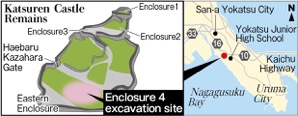 September 27, 2016 Ryukyu Shimpo
September 27, 2016 Ryukyu Shimpo
[Uruma] Coins which appear to be from Roman Empire in the third and fourth centuries, as well as a coin from the Ottoman Empire in the 17th century, were unearthed at Katsuren Castle on September 26, according to the Uruma Board of Education (BoE). This excavation was the first of its kind from a Japanese historical site, and it is possible that the coins were brought to Japan via maritime trade in the 14th and 15th centuries. The BoE hopes that, “This discovery will be a great contribution to not only Japanese history, but also to the study of global trade as a whole.”
According to a number of archeologists who have analyzed the coins, this is the first time such an artifact from the Middle Ages to Early Modern period have been excavated from a historical site from the same period. The coins had Roman letters and Arabic letters respectively, as well as portraits of the emperors of the time.
The study was undertaken by the Uruma BoE with government funding from the Agency for Cultural Affairs. In December, 2013, excavation and analysis began in the eastern section of “Enclosure 4,” in the area around Katsuren Castle’s walls.
A total of 10 copper minted coins were found. Four of the coins were ascertained to be from the Roman Empire in the third to fourth century, and one was made by the Ottoman Empire sometime between 1669 and 1979. The five remaining coins are still being studied.
The coins from the Roman Empire have a diameter of 1.6 -2 cm, and weigh from 1.5-3.6 grams. They appear to be from 337 CE to around the middle of the fourth century, and x-rays have revealed the image of the Roman Emperor Constantine I. Meanwhile, the coin from the Ottoman Empire has a diameter of 2cm, and weighs 1.2 grams. Researchers confirmed that the back of the coin showed both the word for Istanbul and the year of issue. Porcelain as well as old coins from China and Southeast Asia in the 13th -14th centuries were also found around the excavation site.
Uruma BoE Director Masaki Yokoh stated, “It is clear that Katsuren Castle had connections with the West. There is still much we do not know about the history of the castle after it was deserted, and hopefully this precious finding will lead to further breakthroughs.”
The coins will be displayed at Uruma City Yonagusuku Historical Museum’s “New Discovery Exhibit” until November 25.
(English translation by T&CT and Sam Grieb)
Go to Japanese

September 23, 2016 Ryukyu Shimpo
Men’s basketball match called B-League opened on September 22 at the National Yoyogi Stadium. The game was held between the Ryukyu Golden Kings and the Alvark Tokyo at the First Gymnasium. The Kings who was once losing at the beginning of the game caught up with Shuhei Kitagawa’s scores as the game proceeded. However, the Kings could not break through its opponent with the score of 75 – 80. The game was a close and heated match until the last moment. The Kings will play against the Alvark Tokyo again on September 23 to aim for its first win.
The basketball court was specially designed and displayed for this historic match with LED lights and CG effects. The tickets were sold out and gathered 9,132 audiences, with ever-growing attention as the league begins.
The Kings started the last quarter with the score 51 – 64. The team caught up with the match with strong defense, gradually getting close to the Alvark Tokyo. The Kings closed to within three points, making the match heated and exciting, yet lost the game after the team started making errors.
(English translation by T&CT and Sayaka Sakuma)
Go to Japanese
September 27, 2016 Ryukyu Shimpo
If those imposing a burden intend to seriously think about reducing such burden, they must listen sufficiently to the opinions of the local people, and endeavor to realize a solution to the problems they experience.
Unilaterally forcing a “burden reduction” policy on locals who refuse the policy on the grounds that it itself constitutes a burden would not hold water in ordinary society. Yet when it comes to government policy, this is exactly what is happening.
In his general policy speech before the Diet, Prime Minister Shinzo Abe announced that the return of 4,000 hectares constituting a portion of the U.S. military’s Northern Training Area would entail “a nearly 20% reduction of U.S. military facilities within Okinawa Prefecture, the largest land return since Okinawa came back under Japanese administration. This is achievable as a result of relocating helipads comprising 0.96 hectares of land to within the existing training area.”
Abe claims that this measure will constitute a “reduction of the base burden” faced by Okinawa, but he is oversimplifying the issue.
Of the six helipads that are set to be built surrounding the hamlet of Takae in Higashi Village, two have already been completed. U.S. military training using these two helipads has caused nighttime noise to intensify, causing some children to miss school as a result of lack of sleep. Building the other four helipads will further cause locals to suffer from the noise.
This is the “burden reduction” of which the prime minister speaks. A look at the situation in Takae makes it clear that “burden reduction” consisting of land return conditioned on relocation of the facilities therein is merely a sham.
The land being returned is land for which the U.S. military no longer has use. In other words, the return is not being carried out with the objective of “burden reduction.” Nonetheless, the prime minister focuses solely on the area of the land to be returned, claiming the partial return of land in conjunction with the construction of new helipads to be a “reduction of burden.” This runs the risk of causing misunderstanding among the people of Japan.
The prime minister also stated that “We cannot put this off. By surely achieving results one by one, we will open up the future for Okinawa.”
Abe is essentially implying that for the sake of “Okinawa’s future,” residents of Takae must accept the noise arising from U.S. military training. It is hard to imagine that the residents of Takae, or any of the people in Okinawa, are included in the “future of Okinawa” of which the prime minister speaks.
The prime minister said that “it is the people of Japan, not the government, who will decide” regarding constitutional revision. With respect to the U.S. bases in Okinawa as well, he should take seriously the views of Okinawans, who are among the people of Japan.
In his policy speech, the prime minister made no reference to the construction of a new U.S. base in Henoko, Nago City. It is a mistake if he believes that the issue has been settled because the national government was victorious in the illegality confirmation lawsuit fought over the cancellation of authorization to reclaim land in Henoko.
In order to open up “Okinawa’s future,” it is necessary for the governor and people of Okinawa to continue to refuse the construction of new helipads and a new base.
(English translation by T&CT and Sandi Aritza)
Go to Japanese
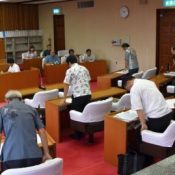
September 27, 2016 Ryukyu Shimpo
On September 22, a U.S. Marine Corps AV-8B Harrier II ground-attack aircraft that come from the U.S. training area Hotel Hotel crashed in the water 153 kilometers east of Cape Hedo, Kunigami Village. In response, the Kunigami Village Council (chaired by Toshimitsu Kanjo) unanimously adopted a protest resolution and a written argument on September 27. The resolution is requesting an investigation into the cause of the accident be announced promptly, flights of AV-8B Harrier II aircraft be halted, and that all operations at Area Hotel Hotel and Area Alpha be shut down. Area Hotel Hotel is comprised of air and water space to the east of Okinawa Island, and Area Alpha is exclusively air space just north of Area Hotel Hotel.
The protest resolution stressed that in the waters off the east coast of Kunigami Village where the crash occurred, the Kunigami Fisheries Cooperative operates nine payaos (artificial floating reefs where fish congregate) that are frequented as a preferred fishing spot. Some of the fish regularly caught there are tuna, skipjack tuna, and large squid. The resolution went on to say that the intense training exercises that take place in the air over those waters threaten the safety of the fishermen’s lives, assets, and operations. However, the fishermen bear their anger in the form of firm opposition.
The Council is going to address this resolution to five people including the U.S. Ambassador to Japan and the commander of the U.S. Forces Japan. The argument will be addressed to five people including the prime minister and the minister of defense. On October 3, all members of the Kunigami Village Council, Mayor of Kunigami Village Hisakazu Miyagi, and other villagers will coordinate how to directly protest and appeal to the Okinawa Defense Bureau.
(English translation by T&CT and Erin Jones)
Go to Japanese
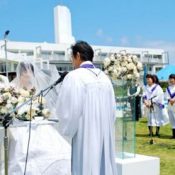
September 23, 2016 Ryukyu Shimpo
On September 21, the Okinawa Prefecture Culture, Tourism and Sports Division summarized the state of achievement of resort weddings in the first half of 2016.
It announced that 6,553 couples had had resort weddings, a rise of 6.4 percent for the same period last year. During the first half of this year, approximately 109,000 tourists visited Okinawa for resort weddings – the figure includes wedding attendants. The economic flow-on to Okinawa is estimated to exceed 10.4 billion yen.
The Okinawa Prefecture aims to have resort weddings for 15,000 couples this year. In 2015, 14,174 couples had weddings. If the rate of the first half of the year continues, it is expected that the goal will be achieved. A breakdown of resort weddings shows that 5,633 couples were from Japan, which is a two percent increase and 920 couples were from overseas, which is an increase of 44.9 percent.
Chapel weddings were the most popular, accounting for 73 percent of the total number of couples that had resort weddings. Photo weddings, in which a couple takes photographs, only made up 22 percent. Three percent of the total had either an Okinawan style of wedding using Ryukyuan dresses, a wedding at a beach, or an uninhabited island.
Meanwhile, “Guerilla photo shooting” in which foreign couples take wedding photos at ceremonial halls, public facilities and tourist facilities without authorization, has become a new issue. A spokesperson for the Prefectural Tourism Promotion Division said, “Collaborating with the Okinawa Resort Wedding Association, which urged people to stop guerilla photo shooting, we are trying hard to keep everyone informed about public rules.”
(English translation by T&CT and Megumi Chibana)
Go to Japanese
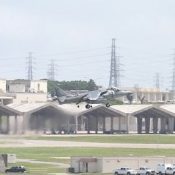
September 22, 2016 Ryukyu Shimpo
A U.S. Marines AV-8 Harrier jet went down in the ocean off Okinawa after taking off from U.S. Kadena Air Base on the afternoon of September 22. According to the U.S. military, the pilot was safe and the Nakagusuku branch of the Japan Coast Guard dispatched rescue officers. Around 2:58 p.m., HH-60 helicopters were confirmed to have taken off from Kadena Air Base.
The Harrier jet belonging to U.S. base which had flown to Kadena base from Marine Corps Air Station Iwakuni, crashed in the ocean off Okinawa.
The 11th Regional Coast Guard Headquarters announced that an airplane belonging to the U.S. military appeared to have crashed about 150 kilometers east of Cape Hedo. The U.S. military called for the Coast Guard to rescue the pilot. The Coast Guard dispatched a patrol boat and an airplane for the rescue mission.
The pilot was reported to have ejected safely from his aircraft. The crashed U.S jet flew to Kadena Air Base from Iwakuni Base this August and had been training in Okinawa.
(English translation by T&CT)
Go to Japanese






 September 27, 2016 Ryukyu Shimpo
September 27, 2016 Ryukyu Shimpo



 Webcam(Kokusai Street)
Webcam(Kokusai Street)


